
How to Use 4S 100A LiFePO4 Battery Balance Charging Protection BMS Module: Examples, Pinouts, and Specs
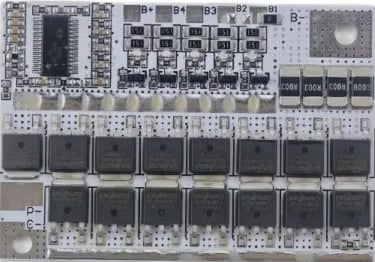
 Design with 4S 100A LiFePO4 Battery Balance Charging Protection BMS Module in Cirkit Designer
Design with 4S 100A LiFePO4 Battery Balance Charging Protection BMS Module in Cirkit DesignerIntroduction
The 4S 100A LiFePO4 Battery Balance Charging Protection BMS Module is a critical component for managing 4-series lithium iron phosphate (LiFePO4) battery packs. It ensures safe and efficient operation by providing balance charging, overcharge protection, over-discharge protection, and short-circuit protection. This module is designed to maintain the health and longevity of LiFePO4 batteries, making it an essential part of battery-powered systems.
Explore Projects Built with 4S 100A LiFePO4 Battery Balance Charging Protection BMS Module
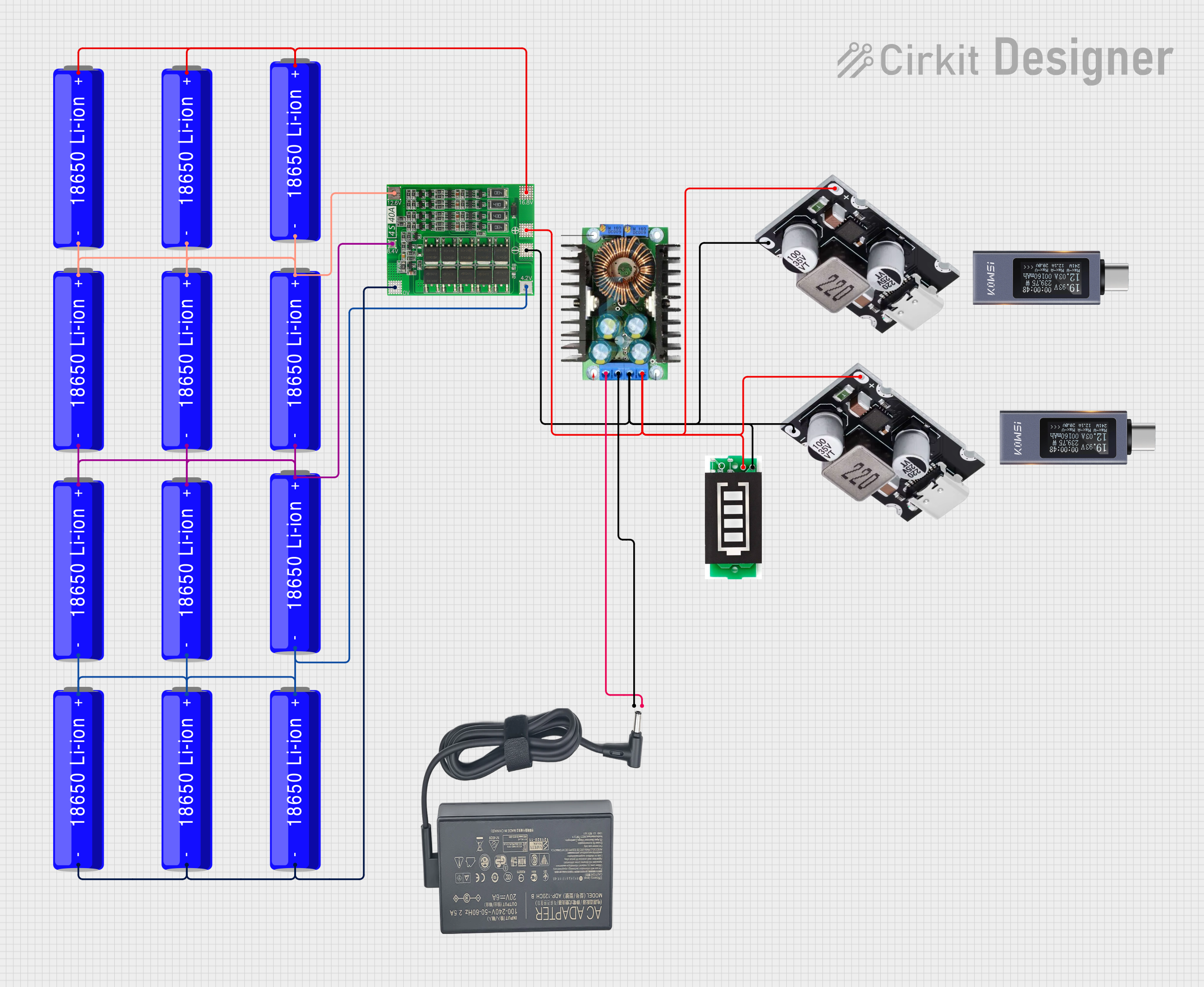
 Open Project in Cirkit Designer
Open Project in Cirkit Designer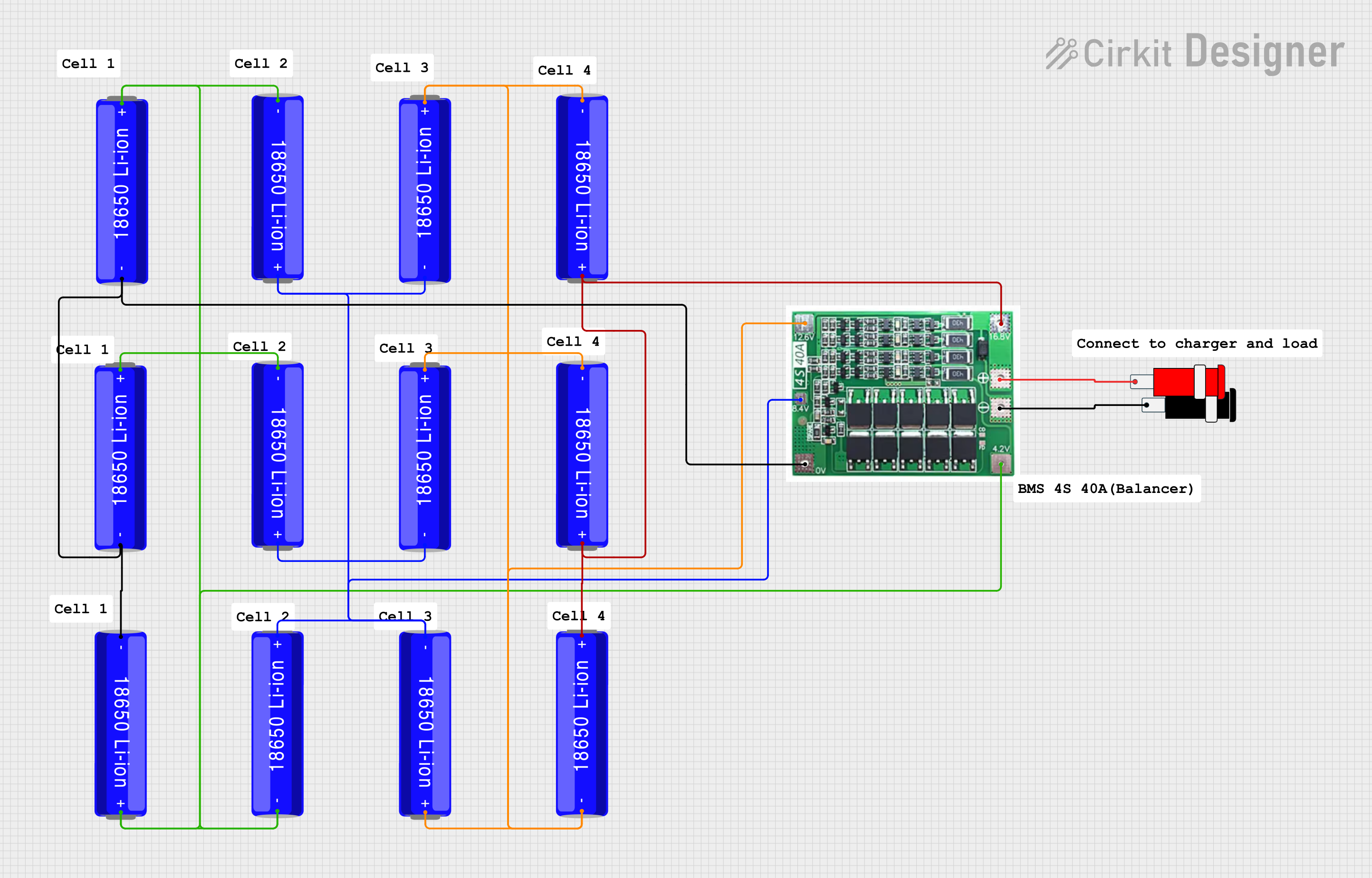
 Open Project in Cirkit Designer
Open Project in Cirkit Designer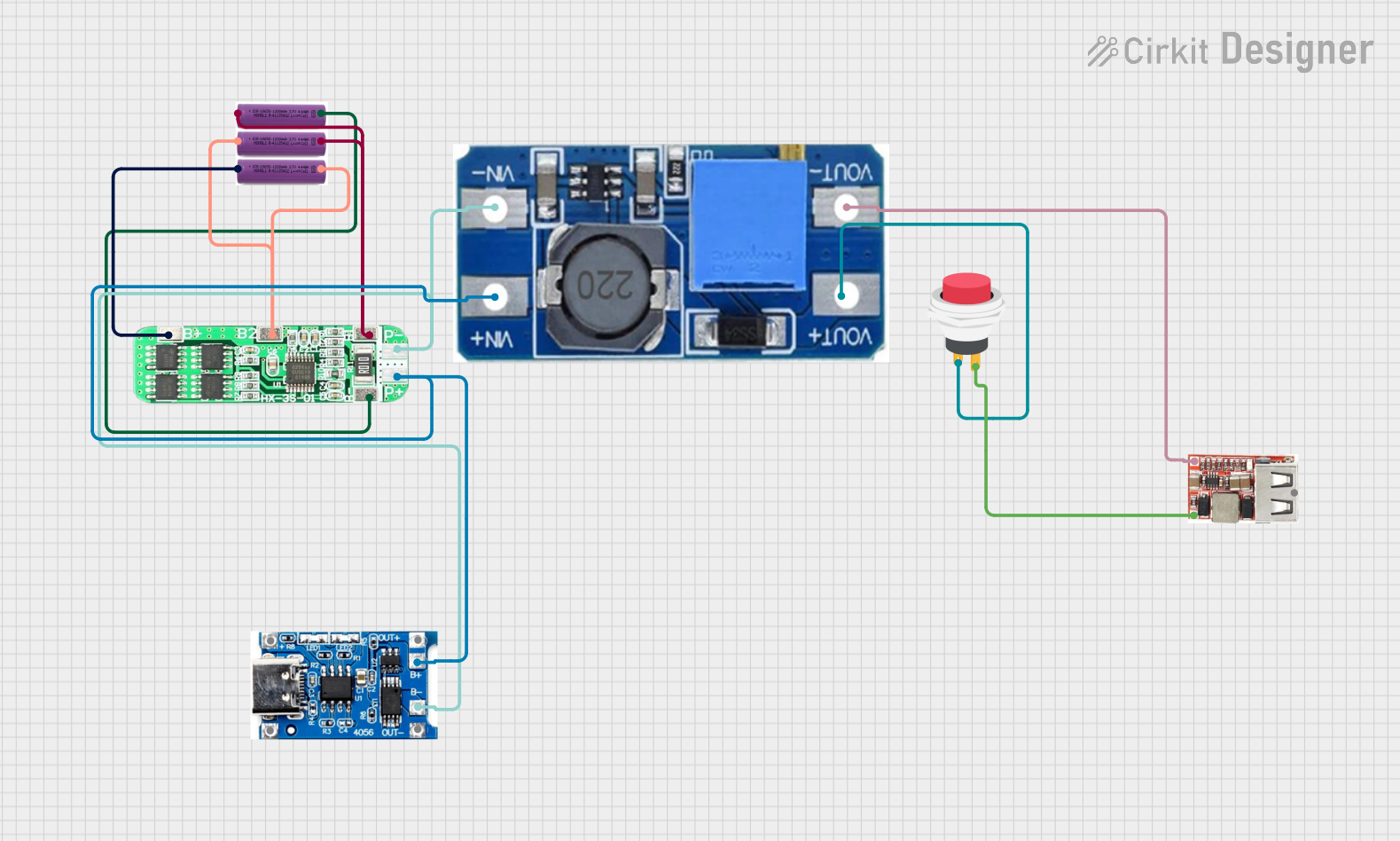
 Open Project in Cirkit Designer
Open Project in Cirkit Designer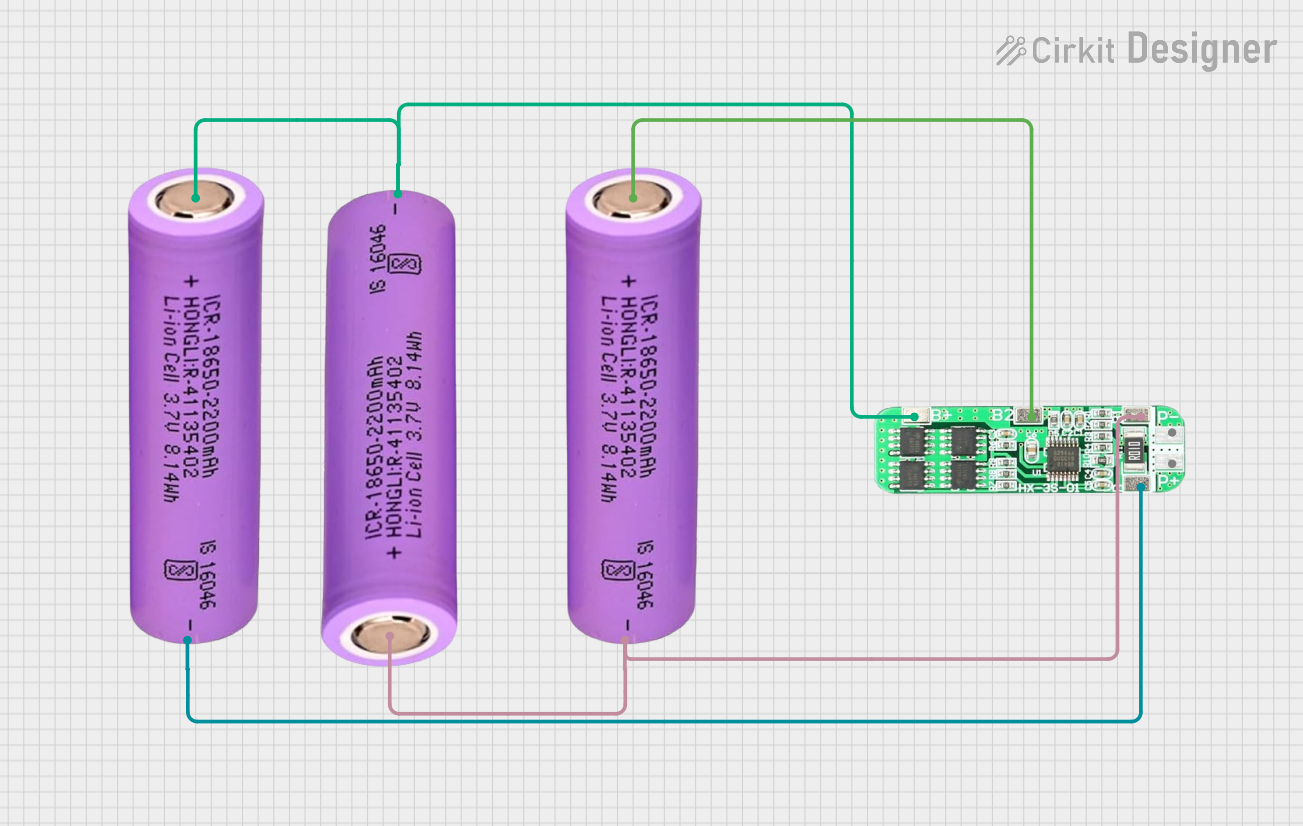
 Open Project in Cirkit Designer
Open Project in Cirkit DesignerExplore Projects Built with 4S 100A LiFePO4 Battery Balance Charging Protection BMS Module

 Open Project in Cirkit Designer
Open Project in Cirkit Designer
 Open Project in Cirkit Designer
Open Project in Cirkit Designer
 Open Project in Cirkit Designer
Open Project in Cirkit Designer
 Open Project in Cirkit Designer
Open Project in Cirkit DesignerCommon Applications and Use Cases
- Electric vehicles (e-bikes, e-scooters, etc.)
- Solar energy storage systems
- Uninterruptible power supplies (UPS)
- Portable power stations
- Robotics and industrial equipment
Technical Specifications
The following table outlines the key technical details of the 4S 100A LiFePO4 BMS module:
| Parameter | Value |
|---|---|
| Battery Type | LiFePO4 (Lithium Iron Phosphate) |
| Number of Cells Supported | 4 (4-series configuration) |
| Maximum Continuous Current | 100A |
| Overcharge Protection Voltage | 3.65V ± 0.05V per cell |
| Over-discharge Protection Voltage | 2.5V ± 0.05V per cell |
| Balance Current | 60mA |
| Operating Temperature Range | -20°C to 60°C |
| Dimensions | 120mm x 60mm x 10mm |
Pin Configuration and Descriptions
The module has several key connections for proper operation. The table below describes each pin:
| Pin Name | Description |
|---|---|
| B- | Battery pack negative terminal connection |
| B1, B2, B3 | Connections to the positive terminals of each cell in the 4-series configuration |
| B+ | Battery pack positive terminal connection |
| P- | Negative terminal for load and charger |
| P+ | Positive terminal for load and charger |
Usage Instructions
How to Use the Component in a Circuit
Connect the Battery Pack:
- Connect the B- pin to the negative terminal of the battery pack.
- Connect the B1, B2, and B3 pins to the positive terminals of the first, second, and third cells, respectively.
- Connect the B+ pin to the positive terminal of the battery pack.
Connect the Load and Charger:
- Connect the P- pin to the negative terminal of the load and charger.
- Connect the P+ pin to the positive terminal of the load and charger.
Ensure Proper Wiring:
- Double-check all connections to ensure they are secure and correctly aligned with the pin configuration.
Power On:
- Once all connections are made, the BMS module will automatically manage the battery pack, providing balance charging and protection.
Important Considerations and Best Practices
- Cell Matching: Ensure all cells in the battery pack have similar capacities and internal resistances to avoid imbalance.
- Heat Dissipation: The module may generate heat during operation. Ensure proper ventilation or heat sinking to prevent overheating.
- Avoid Overloading: Do not exceed the maximum continuous current rating of 100A to prevent damage to the module.
- Wiring Order: Always connect the B- pin first, followed by the B1, B2, B3, and B+ pins. Disconnect in reverse order.
Arduino UNO Integration
While the BMS module itself does not directly interface with an Arduino, you can monitor the battery pack's voltage using an Arduino UNO and a voltage divider circuit. Below is an example code snippet for monitoring the voltage of a single cell:
// Define the analog pin connected to the voltage divider
const int voltagePin = A0;
// Define the voltage divider ratio (adjust based on your resistor values)
const float voltageDividerRatio = 5.0; // Example: 100k and 20k resistors
void setup() {
Serial.begin(9600); // Initialize serial communication
}
void loop() {
// Read the analog value from the voltage divider
int analogValue = analogRead(voltagePin);
// Convert the analog value to voltage
float voltage = (analogValue * 5.0 / 1023.0) * voltageDividerRatio;
// Print the voltage to the Serial Monitor
Serial.print("Cell Voltage: ");
Serial.print(voltage);
Serial.println(" V");
delay(1000); // Wait for 1 second before the next reading
}
Note: Use appropriate resistor values in the voltage divider to ensure the input voltage to the Arduino does not exceed 5V.
Troubleshooting and FAQs
Common Issues and Solutions
Module Overheating:
- Cause: Excessive current draw or poor ventilation.
- Solution: Reduce the load current or improve heat dissipation with a heatsink or fan.
Battery Pack Not Charging:
- Cause: Incorrect wiring or damaged cells.
- Solution: Verify all connections and check the health of each cell in the battery pack.
Imbalanced Cells:
- Cause: Cells with different capacities or internal resistances.
- Solution: Replace mismatched cells or manually balance the cells before connecting to the BMS.
No Output Voltage:
- Cause: Over-discharge protection triggered.
- Solution: Recharge the battery pack to reset the protection circuit.
FAQs
Q: Can this BMS module be used with other battery chemistries?
A: No, this module is specifically designed for LiFePO4 batteries and should not be used with other chemistries.
Q: What happens if I exceed the 100A current limit?
A: Exceeding the current limit may damage the module or trigger the short-circuit protection.
Q: How do I know if the module is balancing the cells?
A: The module automatically balances the cells when their voltages differ. You can measure the individual cell voltages to confirm balancing.
Q: Can I use this module for a 3-series or 5-series battery pack?
A: No, this module is designed specifically for 4-series configurations. Using it with other configurations may result in improper operation or damage.